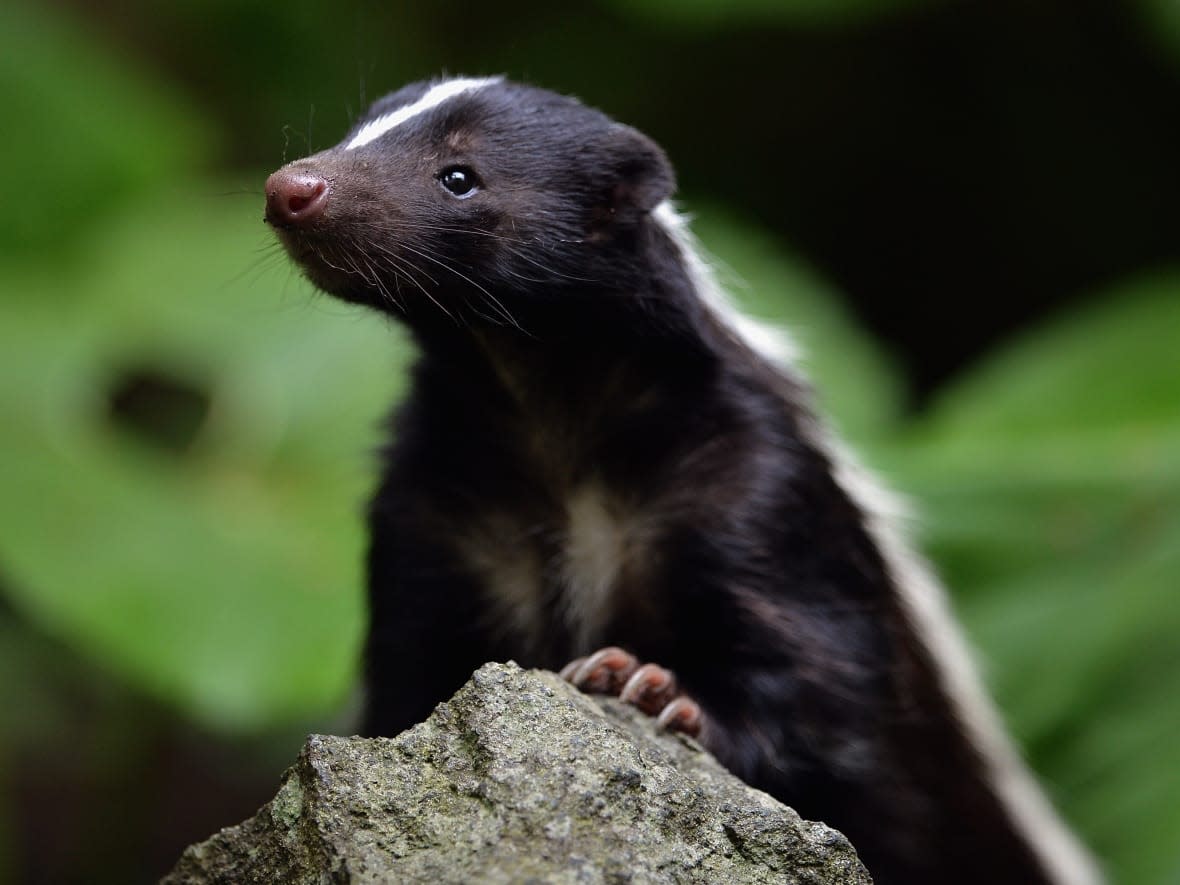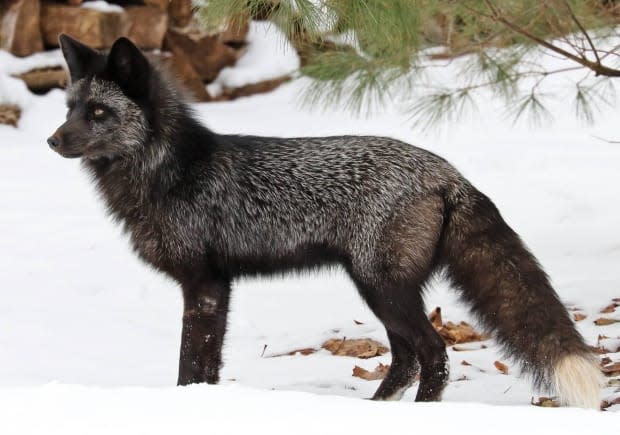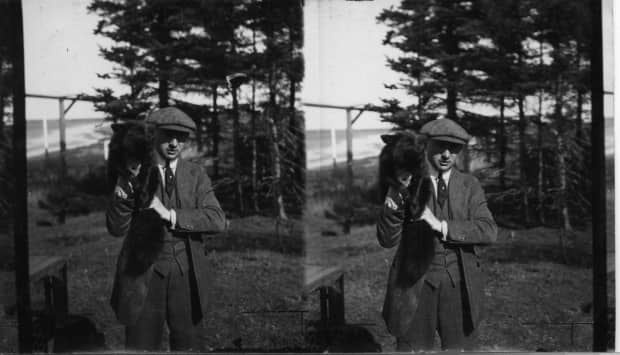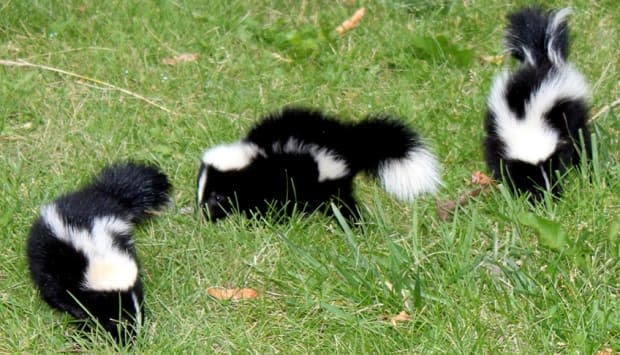How a fur craze led to skunks being introduced into P.E.I.

Skunks are so prevalent in P.E.I., Islanders may be surprised they weren't always here.
Though the Island is a perfect habitat for the little critters, they didn't migrate before the land bridge that connected the province to the mainland disappeared.
In fact, skunks were introduced into P.E.I. only about a century ago by humans looking to make a quick buck.
The reason why anyone would want to import what most people today would consider a pest is linked to two things: red foxes and the world of high fashion.
"We had no skunks, but we had foxes. And the red fox has a mutant strain ... that produces black fox fur," UPEI history professor Ed MacDonald said.
"And in the late 1800s, because it was so rare and because the fur was so beautiful and glossy and the black fur had silver guard hairs, slightly longer hairs, and those guard hairs gave the black fox a silver sheen, that was the acme of fashion."

Charles Dalton and Robert Oulton were two entrepreneurial men looking to get some of that money, and they managed to do on the Island what no one had been able to before — they convinced the foxes to breed in captivity.
The partners managed to do this on a ranch in little island near Alberton, were they recreated wild fox dens and kept the animals as far away from humans, noise and other disturbances as possible.
"They invented fox farming in Canada, and they made an enormous amount of money, along with a few confreres," MacDonald said.
Eventually the two men and a handful of their partners formed the "Big Six" combine in western P.E.I., and cornered the market for high quality fox furs, controlling the supply by agreeing not to sell their live foxes to outsiders.
A single one of their pelts sold for $1,807 in 1900, at a time when the average farmer was making around $300 a year.
"They tried to keep what they were doing a secret," MacDonald said. "So people suspected they were breeding the foxes, and that's why they suddenly had this guaranteed supply of high quality fur, rather than randomly being able to trap these … black foxes."
"But finally, around 1910, the monopoly was broken and that touched off a fox boom."

Once the secrets of domestication got out, there was a frenzy of investment in the industry. Those looking to start their own farms could be paying around $5,000 for a pair of foxes.
"People were trading handsome homes, mansions for live foxes," MacDonald said. "I think the largest sum that I heard thrown about was $20,000 for a pair of breeding … black foxes."
The boom also led to an increase in the number of cheaper fox fur alternatives and knock-offs — including those made out of skunk.
"What if you wanted black fox fur, but you couldn't afford to buy silver black foxes? What if you wanted a facsimile that was handsome, not as handsome, but handsome and more affordable? Well, one of the options was skunk, which produced a durable pelt, and skunks were domesticated quite easily," MacDonald said.
"The only problem was we didn't have any in Prince Edward Island."
Some Islanders started importing striped skunks to raise on farms, selectively breeding the animals to eliminate as much of their distinctive white stripe as possible.
"[The pelts were] marketed not as skunk, but usually marketed as sable, which is, I guess, a nobler animal than the skunk," MacDonald said.
While the increase in fox fur supply had led prices to drop from the astronomical levels of the 1900s, skunk facsimiles were still way cheaper. A single skunk pelt sold for about $8 to $12, while fox pelts were fetching anywhere from $300 to $400 at the low end.

Eventually, the First World War happened, and the world's fur market collapsed. The skunk farms weren't able to survive the crash.
"Rather than feed skunks... that couldn't be sold or pelted, farmers set them free," MacDonald said.
"So, they took to the habitat like a duck to water and they multiplied quickly in the wild, and they soon became a nuisance. So much so that a bounty was put on their heads, and that didn't really affect the skunks at all."
As for the fox farm industry, it managed to do well in the upcoming decades. But eventually it succumbed to the whims of fashion and the markets.
'They took to the habitat like a duck to water and they multiplied quickly in the wild, and they soon became a nuisance.' - Ed MacDonald
"People flooded the market with fur. Some people got into the industry without paying much attention to quality, and so quality went down even as quality went way up and the industry never really recovered, MacDonald said.
At the same time, the taste in high fashion furs moved from black to platinum and white, so they went out of style. But they were out of style, partly because there were too many black fox furs on the market and the quality had gone down."
P.E.I.'s foxes managed to do well for themselves out of captivity in the meantime, becoming a relatively common sight in the suburbs.
"Whenever I walked around [my old neighborhood], there was a black fox that lived in the neighborhood and you would see it sitting on this guy's lawn a few feet from the sidewalk," MacDonald said.
"If that had been a century ago, that black fox fur would have been so valued that that black fox would not have been sitting out by the sidewalk in Charlottetown. It wouldn't have lasted two hours there."


